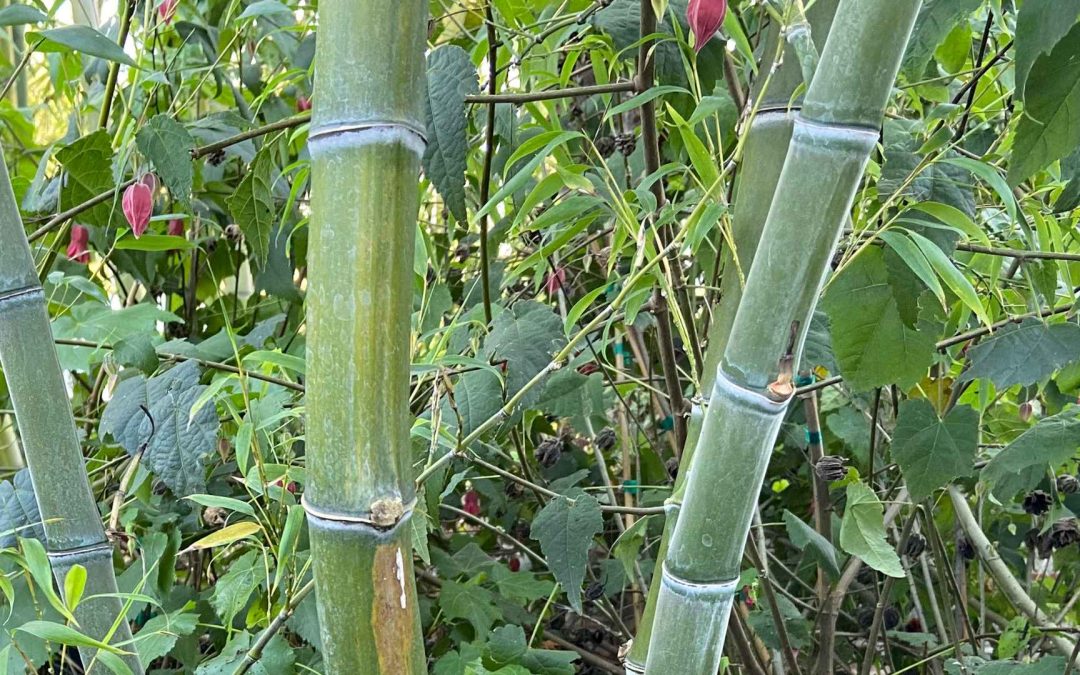If you’ve ever gotten up close and personal with some bamboo — and believe me, I have — there’s a few things you’ll notice. The handsome, upright stems, known as culms, have a smoothness that’s uncommon in nature. Then, every 10 or 20 inches, there’s a joint in the culm, which we call a node. The nodes are similar to the joints or knuckles of a finger, and they are a typical feature of all grasses. You’ll also find that the lateral branches, whether short or long, always appear just above the nodes, and usually on alternating sides as you go up and down the culm. And if you look very closely, you might see a sulcus groove, a little concave notch or indentation just above the branching point.
The sulcus groove is an indentation, sometimes subtle and sometimes pronounced, that appears on alternating sides of a bamboo culm, beginning just above the branch joint and running the length of the internode. Not every bamboo plant has sulcus grooves, but they are a defining characteristic of the genus Phyllostachys. If you can detect this indentation on the stems and rhizomes of a bamboo plant, then you can be almost certain that you have a running bamboo.
NOTE: This article first appeared in November 2020, most recently updated in November 2023.
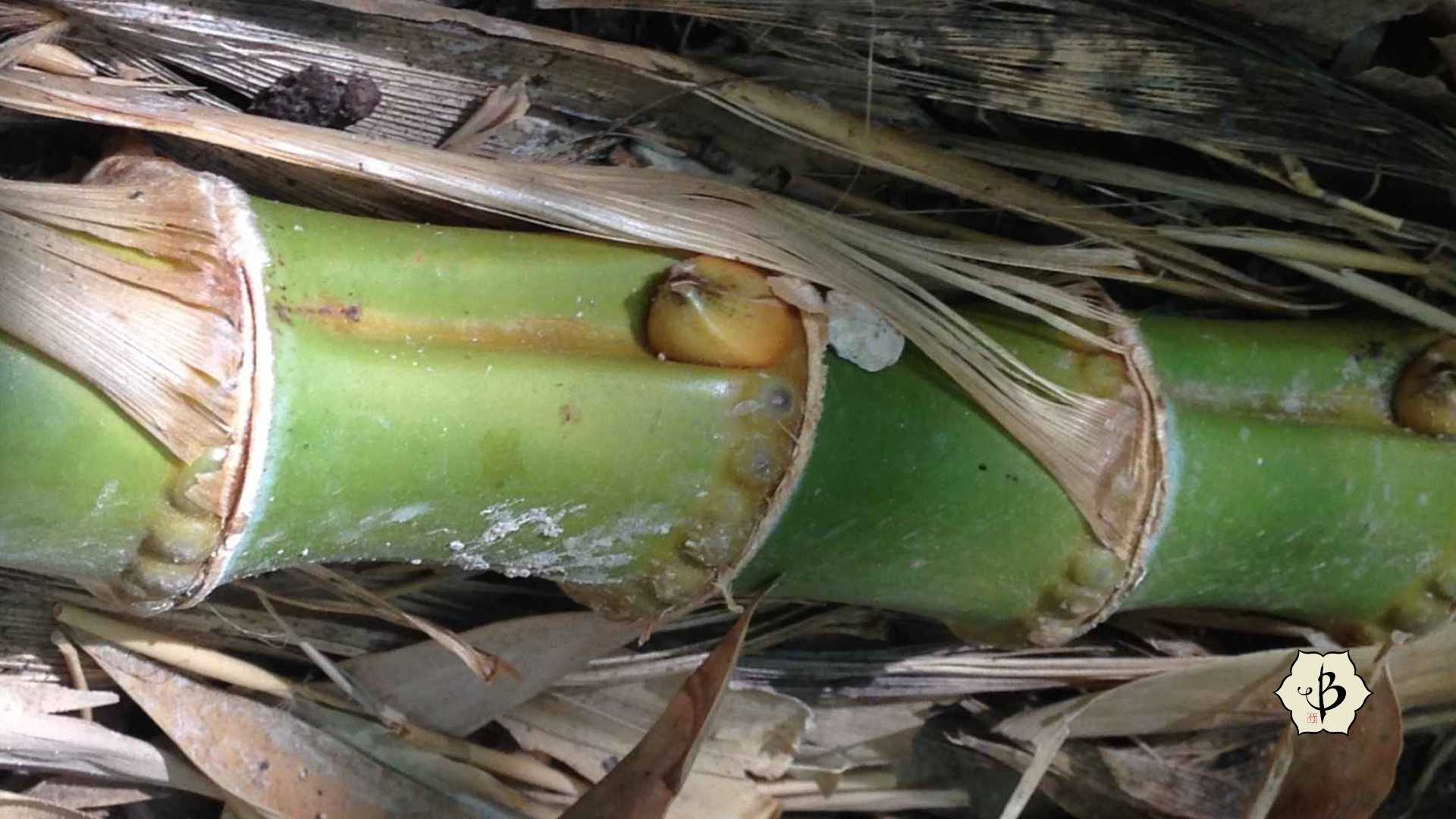
Sulcus groove: Simple and sublime
There’s a sublime beauty to the bamboo plant, with its long, sturdy poles and delicate, wispy foliage. The natural simplicity makes them easy to recognize, easy to draw and easy to work with. And yet there are more than a thousand species of bamboo in this subfamily of grasses, each with its own distinct traits.
Often these distinguishing traits are imperceptible to the untrained eye. In fact, identifying and recognizing species of bamboo is a mighty challenge even for the most passionate bamboo enthusiasts. But some are definitely easier than others.
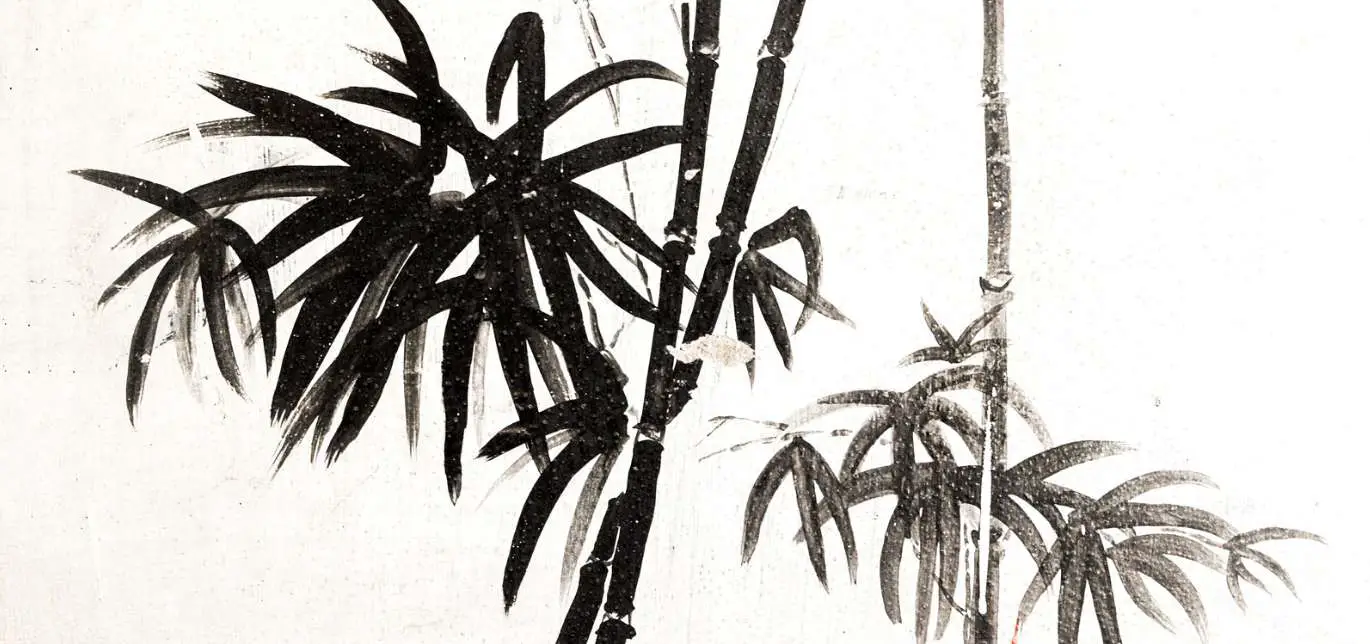
Telltale marker of the genus Phyllostachys
If you know what to look for, Phyllostachys is an easy genus of bamboo to identify. The sulcus groove says it all. It’s that shallow indentation running lengthwise on the internodes of the culms and rhizomes. You might have thought that this distinguished dimple was a common feature of every bamboo, but it’s actually not.
Outside of the tropics, Phyllostachys is probably the most widespread genus of bamboo. They are primarily native to China, as well as Japan and Taiwan, but they have been naturalized throughout the world. And there’s basically two reasons why this variety of bamboos has spread so successfully.
First of all, Phyllostachys are especially hardy. They are some of the most cold-tolerant of all bamboo varieties. This means you can grow them in places like Europe, North America and even Canada, where bamboo doesn’t ordinarily thrive.
The second survival skill of the genus, and perhaps more worrisome, is its vigorous growth habit. While there are something like 100 genera of bamboo, we like to divide them into two basic categories: runners and clumpers. Clumpers, as you might guess, have a compact growth habit and tend to stay put. But generally, clumping bamboos prefer warmer climates. Running bamboos, by contrast, have a different type of rhizome root system that makes them want to spread, sometimes to the point of becoming invasive.
Like most temperate varieties of bamboo, Phyllostachys are runners. This makes them quick to spread and also easy to propagate. The results speak for themselves. If you go to a nursery and find only one of two varieties of bamboo, they are probably Phyllostachys. If you see bamboo growing out in front of a Chinese restaurant, there’s a good chance it’s a kind of Phyllostachys. (Note: These assumptions don’t apply if you live in a balmy climate like south Florida, where tropical bamboo is more prevalent.)
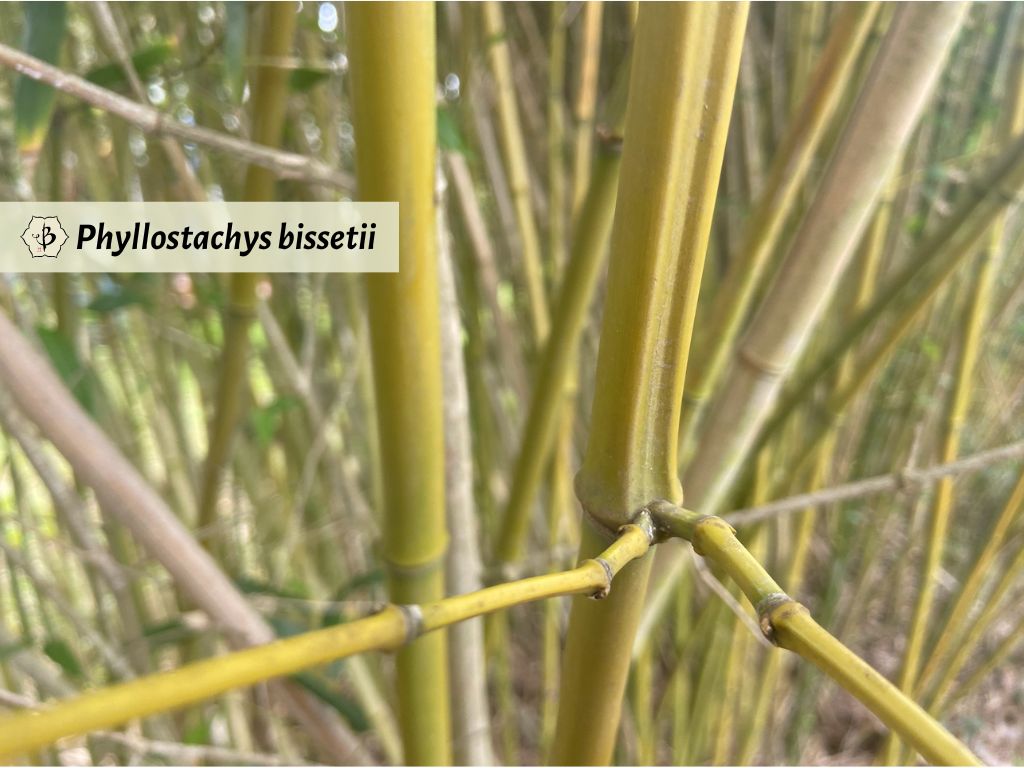
Neotropical sulcus grooves
In the months and years since I first published this article (in November 2020), I have often wondered whether the sulcus groove was a perfectly reliable litmus test for Phyllostachys. So whenever I come across a new or unusual species of bamboo, in a garden or in the field, I always give the internodes a little touchy-feely to check for an indentation. Sometimes the groove can be extremely subtle, and I’ve found some Phyllostachys on which the groove was imperceptible. But as far as I could tell, I never found a groove a culm that wasn’t Phyllostachys.
Now one of the greatest joys of being a bamboo specialist is the opportunity to meet and mingle with other bamboo specialists. So on a recent bamboo expedition, I had the distinct pleasure of speaking with renowned expert Natalia Reategui, and we got to talking about sulcus grooves. As a Peruvian, she’s remarkably knowledgeable about the bamboos of South America, and the genus Chusquea in particular.
What I learned, among other things, was that many species of Chusquea also exhibit this feature. So I guess we can’t know for sure that a groovy bamboo belongs to Phyllostachys. But Chusquea has many other characteristics to help us distinguish it from Phyllostachys. It’s a clumping bamboo, for starters, and the clustered branches at the nodal joints look entirely different. The culms of Chusquea are also solid, rather than hollow, which is quite unusual.
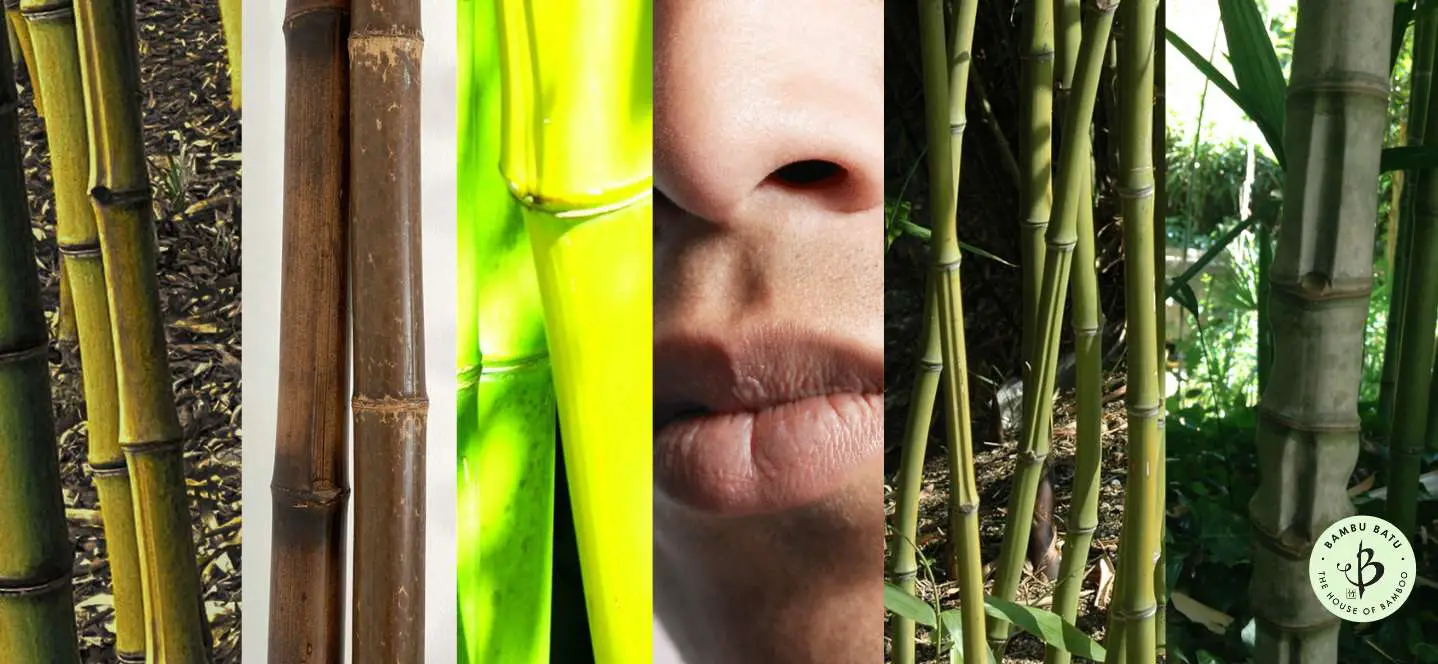
Why the sulcus groove: Form follows function
In the photo collage above, you can see that the sulcus groove reminds me of another groove common to humans. Next time you’re playing Trivial Pursuit, you can remember that this soft indentation above the upper lip is called a philtrum.
In humans, the philtrum is something like a vestige of our ancient ancestors. But in other animals, it serves to carry fluids and odorants from the nose pad down to the mouth. Similarly, the sulcus groove helps moisture to run down the stem of the bamboo and into the joint where leaves and branches will emerge. In colder, drier climates, this can be an advantageous function.
Other analogs in human anatomy
The sulcus groove actually reminds me of another human feature, which also happens to be a fun anatomy term for wooing friends at cocktail parties. Because everyone likes to discuss anatomy after a few cocktails. I’m talking about the suprasternal notch. It’s that cute little concavity at the bottom of the neck, just below the Adam’s apple, between the two clavicles (collar bones).
But the parallels between bamboo and humans go beyond even that superficial oddity. As I mentioned at the top of this article, the bamboo nodes are comparable to human joints or knuckles. The pair of images below really brings that kinship into focus.
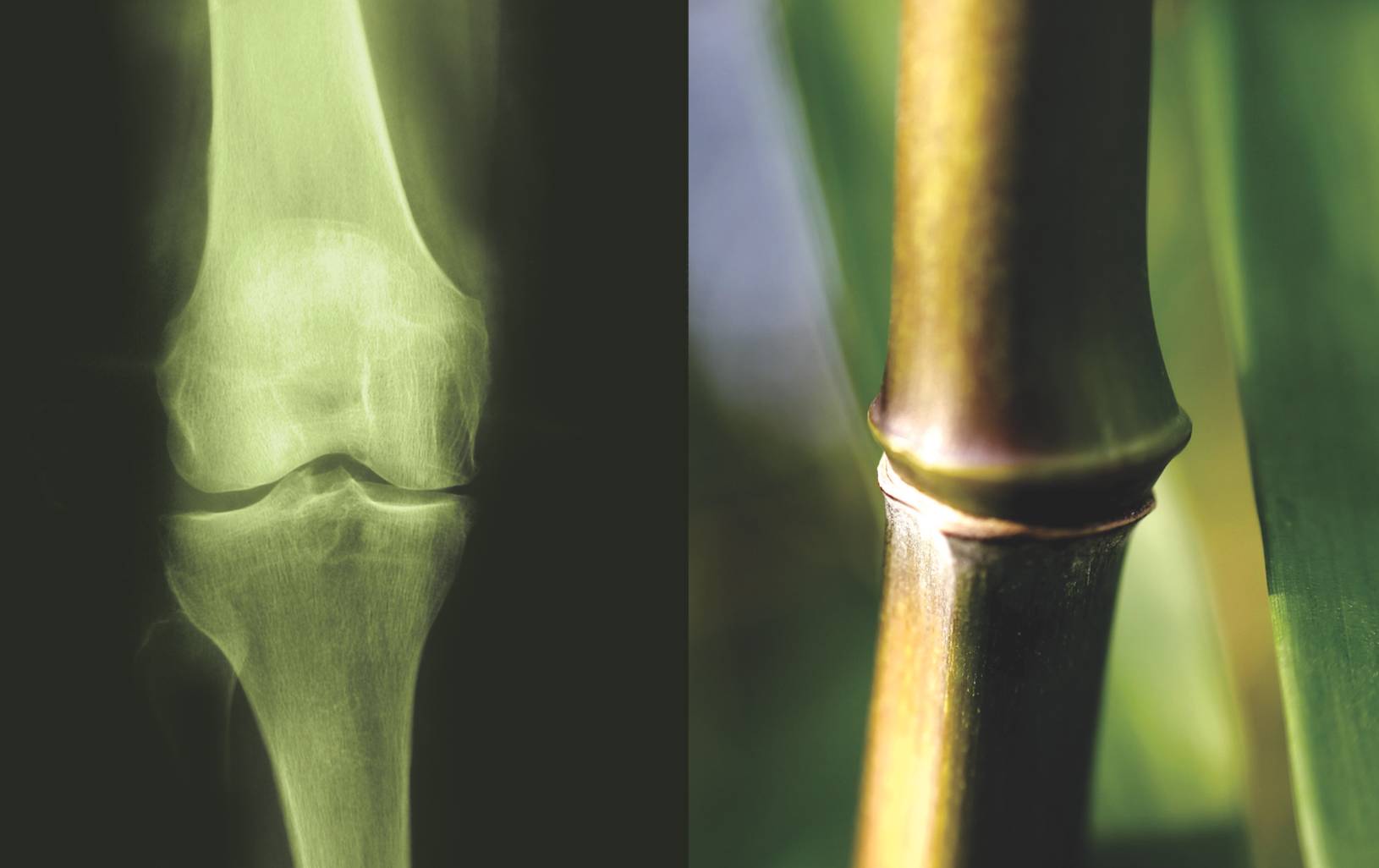
Final fun fact
As long as we’re studying peculiar anatomical features of plants and humans, and preparing ourselves for trivia night, here’s one last item. Can anyone tell me the name of those little strings that turn up when you peel a banana? Most of us separate them delicately and discard them.
But the phloem bundles, as they’re properly called, are actually packed with nutrition. Vascular tissues, essential to the health of the plant, transport the sugars of photosynthesis and deliver critical nutrients to all the cells of the organism. So perhaps they’re more appealing than you first thought!
Further reading
If you’d like to learn more about the joys and mysteries of bamboo, take a look at some of these other popular articles.

